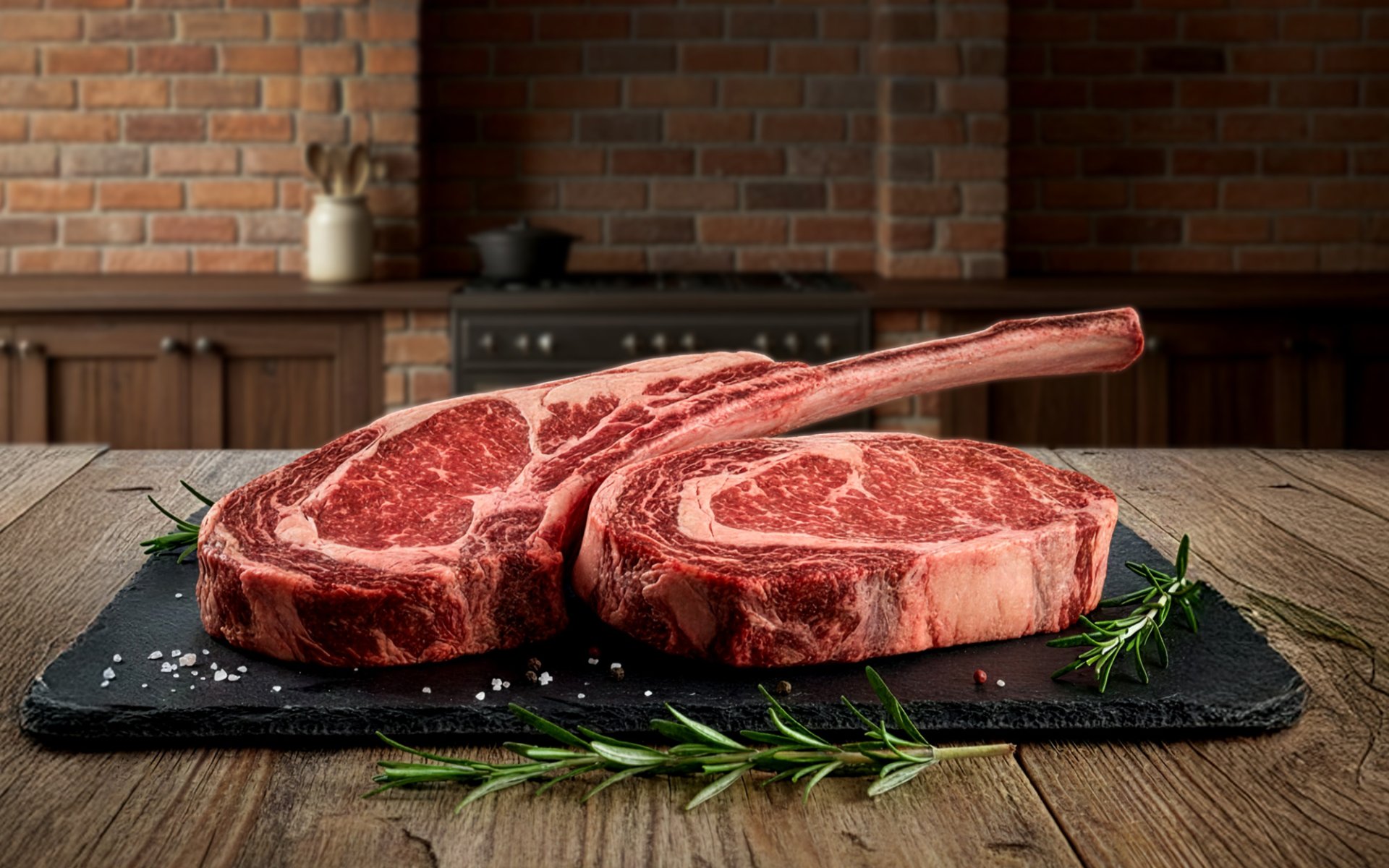Australian Beef
Last updated: 3 Oct 2025

Australian beef is one of the countrys most significant exports and is globally recognized for its high quality, safety, and adherence to international standards.
During the 19th century, cattle farming spread across the nation, particularly in the vast grasslands of Australia. Farmers discovered that the natural climate and pastures were highly suitable for open-range grazing, a system that allows cattle to roam freely and feed on natural grasses.
By 1900, the cattle population had grown to more than 8.6 million, demonstrating remarkable growth. Key drivers behind this expansion included the opening of new grazing lands, the development of transportation infrastructure, and rising domestic and international demand for beef.
Australia initially used the AUS-MEAT system, which graded beef from 09 alongside the BMS (Beef Marbling Score). For example, AUS-MEAT No. 3 equaled BMS 3, No. 4 equaled BMS 4, and so on.
Today, Australia uses a more advanced grading system known as Meat Standards Australia (MSA). This system evaluates various attributes such as meat color, cattle age, firmness, marbling, pH levels, temperature, as well as the presence of hormones and antibiotics. Beef is graded from M1 to M9, with M1 being the lowest and M9 the highest quality.
In addition, the MSA system includes a marbling score ranging from 100 to 1,190. M1 beef typically has a marbling score of 300400, while M9 beef exceeds 1,100.
Cattle in Australia are raised primarily under the grass-fed system, which supports both animal welfare and natural health. Modern processing techniques also enhance quality, such as the Meltique Process, which improves tenderness and juiciness before rapid blast freezing ensures freshness.
You can find Australian Beef at Rimping Supermarket.
Early Beginnings
The history of Australias beef industry dates back to 1788, when the first group of British settlers brought cattle to the continent. In the early years, cattle raising grew slowly due to challenges in adapting to the new environment. However, as settlers gradually learned more about Australias unique climate and geography, cattle farming began to expand rapidly.During the 19th century, cattle farming spread across the nation, particularly in the vast grasslands of Australia. Farmers discovered that the natural climate and pastures were highly suitable for open-range grazing, a system that allows cattle to roam freely and feed on natural grasses.
By 1900, the cattle population had grown to more than 8.6 million, demonstrating remarkable growth. Key drivers behind this expansion included the opening of new grazing lands, the development of transportation infrastructure, and rising domestic and international demand for beef.
Challenges in the 1970s
In the mid-1970s, the Australian beef industry faced serious difficulties when global beef prices plummeted. This crisis led to a sharp decline in cattle numbers, forcing many farmers to either reduce their herds or abandon cattle farming altogether.Recovery in the 1980s
By the 1980s, global demand for beef began to rise again, driven largely by economic recovery and the growing middle class in developing countries. This resurgence encouraged Australias beef industry to expand production and focus on improving quality. At this point, beef grading systems became increasingly important.Australia initially used the AUS-MEAT system, which graded beef from 09 alongside the BMS (Beef Marbling Score). For example, AUS-MEAT No. 3 equaled BMS 3, No. 4 equaled BMS 4, and so on.
Today, Australia uses a more advanced grading system known as Meat Standards Australia (MSA). This system evaluates various attributes such as meat color, cattle age, firmness, marbling, pH levels, temperature, as well as the presence of hormones and antibiotics. Beef is graded from M1 to M9, with M1 being the lowest and M9 the highest quality.
In addition, the MSA system includes a marbling score ranging from 100 to 1,190. M1 beef typically has a marbling score of 300400, while M9 beef exceeds 1,100.
Australia as a Global Beef Exporter
Thanks to these quality improvements, Australia soon became one of the worlds leading beef producers and exporters. By 1982, Australia exported 628,000 tons of beef and veal worth USD 1.177 billion, with the United States and Japan accounting for half of the imports.Breeds and Production Methods
Australia raises several cattle breeds, but the most popular and internationally recognized are Black Angus and Wagyu, both known for their high marbling, tenderness, and rich flavor. The industry caters to diverse markets, offering everything from everyday beef to premium cuts for discerning consumers.Cattle in Australia are raised primarily under the grass-fed system, which supports both animal welfare and natural health. Modern processing techniques also enhance quality, such as the Meltique Process, which improves tenderness and juiciness before rapid blast freezing ensures freshness.
Commitment to Sustainability
The Australian beef industry also emphasizes sustainability and responsible resource management. Free-range grazing, the core principle of Australian cattle farming, helps preserve natural ecosystems and supports biodiversity.Looking Ahead
Today, the industry faces new challenges, including climate change, evolving consumer preferences, and growing competition in the global market. Yet, with more than two centuries of experience, a strong commitment to quality, and the ability to adapt, Australian beef remains a cornerstone of the global beef supply chain.You can find Australian Beef at Rimping Supermarket.
Related Content
Understanding USA Pulses and the U.S. Dry Bean Council (USDBC) Organizations Established to Support and Promote the U.S. Pulse and Dry Bean Industry
Discover California Dairy Leading Dairy Products from California, the Largest Milk Producer in the United States


